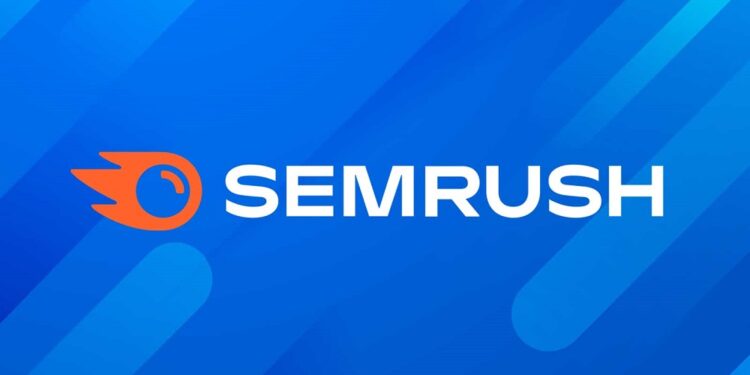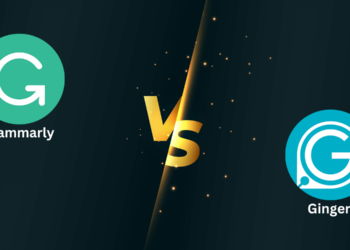SEMrush Review 2023: SEMrush is a powerful digital marketing tool that offers a wide range of features for SEO, PPC, content marketing, and competitive research. In this SEMrush review for 2023, we will take a look at all the pros and cons of this popular tool to help you decide if it’s the right fit for your business.
To begin, take a look at the following chart to recognize how we experience about SEMrush withinside the number one categories:

As you may see, pricing is the main problem with SEMrush. However, pretty much each different class stands robust and will offer the increase you want to make extra money.
Our complete SEMrush review
If you’re interested by the gritty details, and the way we rating every place for SEMrush, hold studying to look an in-intensity SEMrush review.
Pros and Cons of SEMrush
Pros:
- Comprehensive keyword research: SEMrush offers a wealth of data on keywords, including search volume, CPC, and competition levels. This information can be used to inform your SEO and PPC strategies.
- Competitor analysis: SEMrush allows you to see what your competitors are doing in terms of their SEO, PPC, and content marketing efforts. This can help you identify opportunities and stay ahead of the competition.
- Backlink analysis: SEMrush provides detailed information on the backlinks pointing to your website and your competitors’ websites, allowing you to identify opportunities for link building and monitor your link profile for potential issues.
- Detailed analytics: SEMrush offers a wide range of analytics and reporting features, making it easy to track your performance and make data-driven decisions.
Cons:
- High cost: SEMrush is not a cheap tool, and its pricing model can be difficult to understand. Some users may find that the cost is prohibitive for their budget.
- Steep learning curve: SEMrush offers a lot of features, and it can be overwhelming for new users to navigate. It may take some time to fully understand and utilize all of the tool’s capabilities.
- Limited customer support: Some users have reported that SEMrush’s customer support is not always helpful or responsive. This can be frustrating if you need assistance with a technical issue or have a question about a feature.
Read also:
- Ahrefs Reviews & Ratings (2023) | Pros & Cons
- Backlinks in SEO | Update 2023
- Effective keyword research
- Why Producing High-Quality Content Matters for Your Business
- How to Increase Website Traffic | Ultimate Guide 2023
SEMrush pricing
SEMrush offers a variety of pricing options to fit different needs and budgets. The company offers a 14-day free trial, after which users can choose from four different pricing plans: Pro, Guru, Business, and Enterprise.
The Pro plan is the most basic and affordable option, with a monthly cost of $119.95 It includes most of the basic features such as keyword research, competitor analysis, and backlink analysis. The Guru plan is the next step up, with a monthly cost of $229.95. It includes everything in the Pro plan, as well as additional features such as brand monitoring and historical data.
The Business plan is designed for businesses with a larger budget, with a monthly cost of $449.95. It includes everything in the Guru plan, as well as additional features such as API access, white-label reports, and the ability to add team members.
Finally, the Enterprise plan is for large companies or agencies that need the full range of SEMrush features, including dedicated account management and custom solutions. The pricing for the Enterprise plan is not publicly available, and interested parties must contact SEMrush for a custom quote.
It’s worth noting that all of the plans can be billed monthly or annually, with a discount applied for annual billing.

These are month-to-month prices. You can save 16% in case you choose the every year fee plan.
There’s additionally a 14 days free trial that helps you to check it out totally free for a brief time.
Extra (optional) costs
There are some other optional costs to consider:
- Extra users – Starting at an additional $45 per month per user.
- Competitive intelligence add-on – $200 per month for site visitors analytics, a marketplace explorer, and greater.
- Basic local listing management – $20 per month for dispensing enterprise statistics and greater.
- Premium local listing management – $40 per month for everything in the basic plan plus local heat mapping and the capacity to reply to client reviews.
User interface of SEMrush
The user interface of SEMrush is designed to be user-friendly and intuitive, with a navigation menu on the left side of the screen that allows users to easily access different features and tools. The main dashboard displays important data and metrics, such as organic search traffic, backlinks, and paid search spend.

The navigation menu is divided into several sections, such as “Dashboard,” “Projects,” “Reports,” “Tools,” and “Settings.” Users can create and manage projects, which are essentially workspaces where they can track specific websites, keywords, and competitors. The Reports section allows users to generate and export custom reports, which can be useful for sharing data with clients or stakeholders.

The Tools section is where you can find all the features of SEMrush such as keyword research, site audit, backlink analysis, and competitor analysis. There are many options for filtering, sorting and export data.
SEMrush also includes a “Help” section that provides access to documentation, tutorials, and support resources. Overall, the user interface is well-designed and easy to navigate, although it may take some time for new users to fully understand all of the features and options available.
Rank tracking of SEMrush
Rank tracking is a feature of SEMrush that allows users to track the position of their website and specific keywords in search engine results. With SEMrush, you can track rankings for your website, your competitors’ websites, and your clients’ websites.
The rank tracking feature can be accessed from the “Tools” section of the navigation menu. Once you are in the rank tracking section, you can add the URLs and keywords you want to track, and specify the search engines and locations you want to track for. The tool will then generate a report that shows you the current ranking for each keyword, as well as historical data on how the rankings have changed over time.
The rank tracking report is interactive and allows users to filter and sort the data by different metrics such as search engine, location, device, etc. You can also compare the performance of different keywords, and view the ranking distribution for each keyword.

SEMrush also allows you to set up automatic reports, which can be delivered to your email on a daily, weekly or monthly basis. This allows you to stay informed about your website’s performance and make data-driven decisions.
Overall, the rank tracking feature of SEMrush is a powerful tool that can help users to monitor and improve their search engine rankings. It provides a wealth of data and insights that can inform SEO and PPC strategies, and track the success of these strategies over time.
Keyword research
Keyword research is an important feature of SEMrush, which allows users to discover new keywords and understand the search intent of their target audience. The keyword research tool can be accessed from the “Tools” section of the navigation menu.
Once you are in the keyword research section, you can enter a seed keyword, and SEMrush will generate a list of related keywords, along with important metrics such as search volume, CPC, and competition. The tool also provides a list of similar keywords and phrases, which can be useful for identifying long-tail keywords.
SEMrush’s keyword research tool also provides a feature called “Keyword Magic Tool”, which is a powerful tool for uncovering new keywords, with a large database of keywords and phrases. It allows you to filter keywords by different metrics such as search volume, CPC, and competition, and also shows the ranking difficulty and potential organic traffic.
The tool also provides a feature called “Phrase Match Keywords”, which allows you to see a list of keywords that include your seed keyword, which can be useful for identifying long-tail keywords.

SEMrush also offers a keyword gap analysis tool, which allows you to compare the keywords of your website with those of your competitors. This can help you identify gaps in your keyword strategy and find new opportunities.

Overall, SEMrush’s keyword research tool is a comprehensive and powerful tool that can help users to understand the search intent of their target audience, identify new keywords, and improve their SEO and PPC strategies. With SEMrush’s keyword research tool, you can gain valuable insights and data that can inform your content strategy and help you to reach your target audience more effectively.
Competitor analysis tools of SEMrush
SEMrush offers a variety of competitor analysis tools that allow users to track and understand the performance of their competitors in the search engine results pages (SERPs) and in the online advertising space. These tools can be accessed from the “Tools” section of the navigation menu.
One of the most popular competitor analysis tools in SEMrush is the “Domain Analysis” tool, which allows you to compare the performance of your website against that of your competitors. It provides a wealth of data and metrics, such as organic search traffic, backlinks, and top organic keywords, that can help you understand your competitors’ strengths and weaknesses, and identify opportunities for improvement.
Another powerful tool is the “Competitive Positioning Map”, which allows you to visualize how your website and your competitors are positioned in the SERPs for a particular keyword or phrase. This tool can help you understand where your competitors are outperforming you and where you have an advantage.

SEMrush also offers a “PPC Keyword Tool” which allows you to see the keywords that your competitors are bidding on in paid search advertising and the performance of their ads. This can help you to understand their PPC strategy and identify new opportunities for your own PPC campaigns.
SEMrush also has a feature called “Social Media Tracker” which allows you to track the performance of your competitors on social media platforms, such as Facebook, Twitter, Instagram, and YouTube. This can help you to understand how your competitors are using social media to engage with their audience and identify opportunities to improve your own social media strategy.
Overall, SEMrush’s competitor analysis tools are a powerful suite of tools that can help users to understand the performance of their competitors in the SERPs and online advertising space. These tools provide valuable insights and data that can inform SEO and PPC strategies, and help users to stay competitive in their industry.

Our final SEMrush review 2023 analysis
Before summing up our review, take a look at the comparison table one more time.

If you’re still struggling with whether or not your organization could benefit from SEMrush, take a look at our final suggestions below.
Go with SEMrush if…
- You run a small or mid-sized business with a decent budget.
- You run an online store.
- You manage a large brand that’s rapidly scaling.
- You’re looking for the best competitor analysis tools on the market.
- You want top-notch SEO and marketing features all packed into an easy-to-understand suite.
- You need a tool for finding keyword suggestions and improving your content marketing.
- You’d like the bonus of receiving some social media analysis features as well.
Skip SEMrush if…
- You’re stretched for cash and could find some cheaper or free ways to get similar results.
- You’d rather stick to a more simplified method for keyword suggestions and tracking.
- You don’t find the interface appealing. This is a personal preference, but you can easily test the SEMrush free trial and then compare it with a similar solution like Ahrefs.
















